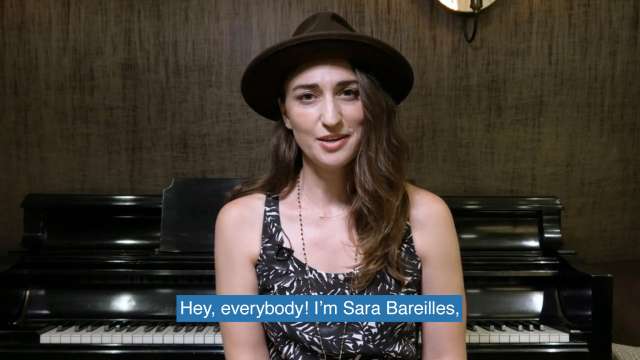Video

Video is a powerful and increasingly popular marketing medium for UCLA Health. In this section, you’ll learn how to create captions for your videos to make sure they are accessible to all.
Video guidelines
Every video is an expression of the UCLA Health, David Geffen School of Medicine at UCLA (DGSOM) and/or UCLA Mattel Children’s Hospital brand and as such, they should have a consistent visual style.
A standard graphics package is available for download for UCLA Health and DGSOM branded videos.
Branded video tags
Select the desired video files by clicking on the button below. Always use the prepared videos available in this section. If you do not see the file format you need, email the Marketing department.
The branded video tags are only required on videos longer than 30 seconds. They are to be placed at the end of the videos only.
Photography and Filming Policy
Photography or filming or any type of video or other recording by any means of patients or staff is strictly prohibited unless it meets the requirements in UCLA Health Policy 0308, which is intended to protect the confidentiality and privacy of patients and staff while allowing photography or videography under appropriate circumstances. Filming by third parties on UCLA property for any commercial purpose is strictly prohibited unless a permit is first issued by the Campus Events Office. Documentary filming, reality shows, and similar productions are generally not supported by the University.
Types of Photography
- Photography for Clinical Purposes
- Photography for Educational Purposes
- Photography for News Reporting, Documentary Films or Other Media
- Commercial Photography
- Patient Personal Photography
Consents
Videos and photos consents:
- Photography of patients (other than Photography in Section II.a or II.e) requires a signed HIPAA Authorization in advance of such Photography (HS Form #30910 and Form #10844 for News Stories or Promotional Materials, and Form # 10069 for use by UCLA for Educational Purposes). Authorizations must be placed in the patient’s medical record.
- Photography of staff for commercial purposes or by UCLA Health Marketing requires a written consent executed by the staff in advance of such Photography.
- Photography of staff by patients for Personal Photography in Section II.e requires the verbal consent of the staff in advance of such Photography.
Photo and Video Shoots and permits
Marketing photography/videography requires approval and oversight of the UCLA Health Marketing office. Photography involving a commercial filming permit from the Events Office requires oversight and approval by the Campus Events Office. See Section B. parts 1 & 2 of Policy 863.
Photography/videography by news media organizations, documentary filmmakers and other media deemed to have significant news or institutional value require approval and oversight by the UCLA Health Media Relations Office.
If you hire an outside photographer or videographer, you need to work with purchasing to ensure the individual has appropriate liability insurance. You should engage the photographer on a work-for-hire basis, or obtain a written agreement that UCLA will have unlimited usage rights to the photography or videography.
Captions
To meet ADA guidelines, university videos are required to have some form of captioning available for viewers. There are two options for captioning: open and closed. Open captions are always in view and cannot be turned off, whereas closed captions can be turned on and off by the viewer. When deciding on a method of captioning, consider your marketing goals, as well as the platform and context. Below are platform-specific best practices as well as instructions for creating captions in Adobe Premiere.

Closed and Open Captioning
YouTube, Facebook and Vimeo
YouTube, Facebook and Vimeo support closed captioning, so open captioning is not necessary. However, remember to edit the closed caption file before publishing and promoting your video. Auto-generated caption files often contain misspellings and errors. In fact, auto-generated caption files supplied by YouTube and others are not considered viable according to the Department of Justice for compliance with ADA.
You may upload your video to YouTube, correct your captions within the platform, and download an .SRT file. When uploading the same video to Facebook, upload the .SRT file to easily correct captions and avoid duplicate effort. Facebook auto-plays all videos with the sound turned off, so open captioning is a best practice for higher post engagement.
Twitter, Instagram and LinkedIn
Twitter, Instagram and LinkedIn do not support closed captioning, so open captioning is required for ADA compliance.
Adding Open Captions
Follow these steps to create open captions in Adobe Premiere. Remember to create your video with captions in mind to prevent the captions overlapping your video’s text and graphics.
Note: These instructions assume basic knowledge of the Adobe Premiere software.
- Add a caption layer
- Select open captions
- Select Helvetica regular fo nt
- Select font size 36
- Select background color: UCLA Blue
RGB: 39 116 174
Hex #2774AE - Set font color to white
- Write captions
- Position caption block in the center
- Set vertical position to 90%
Social Media Video Specifications
Instagram video specifications
Design Recommendations
- Aspect Ratio: 1:1
- Video: H.264 video compression, high profile preferred, square pixels, fixed frame rate, progressive scan
- Format: .mp4 container ideally with leading mov atom, no edit lists
- Audio: Stereo AAC audio compression, 128kbps + preferred
- Caption: Text only, 125 characters recommended
Technical Requirements
- Caption length text: 2,200 characters Max
- Video aspect ratio: 1.9:1 to 1:1
- Minimum resolution: 600 x 315 pixels (1.9:1 landscape) / 600 x 600 pixels (square)
- Minimum length: 3 seconds
- Maximum length: 60 seconds
- File type: Full list of supported file formats
- Supported video codecs: H.264, VP8
- Supported audio codecs: AAC, Vorbis
- Maximum size: 4GB
- Frame rate: 30fps max
- Bitrate: No limit to bitrate file if you’re using two pass encoding, as long as your file doesn’t exceed 1 GB. Otherwise, 8 megabits per second for 1080p and 4 megabits per second for 720p.
- Thumbnail image ratio: Should match the aspect ratio of your video. Your image should include minimal text. See how the amount of text in your ad image will impact the reach of your ad.
Facebook video specifications
Design Recommendations
Use these guidelines to design an ad that looks good everywhere it appears on Facebook. The recommended video and thumbnail image guidelines ensures your ad always looks high quality. Your image should include minimal text. The recommended text length is how many characters of ad copy could be displayed on smaller screens.
- Aspect Ratio: 16:9 or 1:1
- Video: H.264 video compression, high profile preferred, square pixels, fixed frame rate, progressive scan
- Format: .mp4 container ideally with leading mov atom, no edit lists
- Audio: Stereo AAC audio compression, 128kbps + preferred
Technical Requirements
- Recommended video aspect ratio: 1:1 / 1.33:1 / 4:3 / SDTV, 1.375:1 / film, 1.77:1 / 16:9 / HDTV, 1.85:1 / Film, 2:39:1 or 2:40:1 / Widescreen / 9:16, no pillar boxing or letter boxing
- Minimum resolution: 600 x 315 pixels (1.9:1 landscape) / 600 x 600 pixels (square)
- Maximum length: 120minutes
- File type: Full list of supported file formats
- Supported video codecs: H.264, VP8
- Supported audio codecs: AAC, Vorbis
- Maximum file size: 4GB
- Frame rate: 30fps max
- Bitrate: No limit to bitrate file if you’re using two pass encoding, as long as your file doesn’t exceed 1 GB. Otherwise, 8 megabits per second for 1080p and 4 megabits per second for 720p.